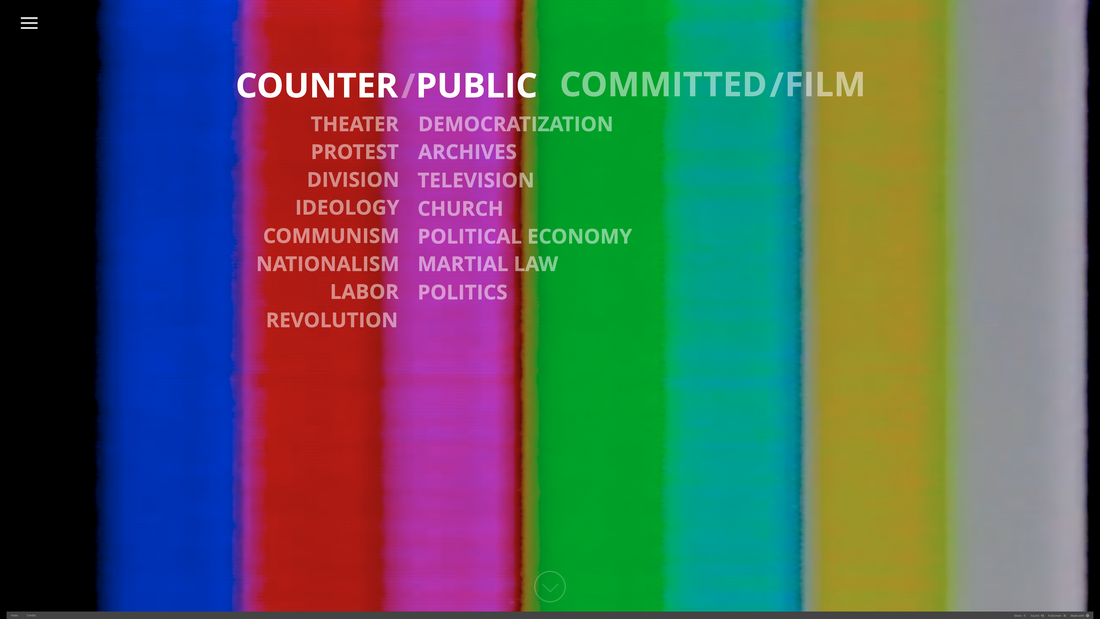counterpublic.net
I chose images of archives and vinegar-syndrome afflicted film as a metaphor to represent reification and memory loss in my research “Counter/Public: The
Politics of Committed Film in the Philippines.”The research focuses on the “new cinema” (the 1970s-1980s) and required conversations with archivists, journalists, actors, editors, filmmakers, and activists. These “social history” accounts were lit and filmed with two cameras, then preserved and published in an interactive database documentary. I broke down the material into roughly one-minute edits consisting of tightly intercut, differing, and even contradictory recollections of
two interviewees. The “script” for these edits was “written” using qualitative analysis software (f4analyse)—revealing patterns and topics that might not otherwise have surfaced. The viewer can access said edits in the interactive documentary (made in Klynt) by clicking on either COUNTER/PUBLIC or COMMITTED/FILM. The long-form interviews are available from a drop-down menu linked to a YouTube channel. The idea is not only to preserve the excess footage
but publish the informant interviews (here, as “social history” integrated into and standing alongside an interactive documentary) for viewers who either reconstruct the research process themselves or—if they prefer—perform their own research. I invite the reader to experience this process at counterpublic.net.
“Counter/Public: The Politics of Committed Film in the Philippines,” Interactive Film & Media Journal, 2(2). https://doi.org/10.32920/ifmj.v2i2.1582.
Politics of Committed Film in the Philippines.”The research focuses on the “new cinema” (the 1970s-1980s) and required conversations with archivists, journalists, actors, editors, filmmakers, and activists. These “social history” accounts were lit and filmed with two cameras, then preserved and published in an interactive database documentary. I broke down the material into roughly one-minute edits consisting of tightly intercut, differing, and even contradictory recollections of
two interviewees. The “script” for these edits was “written” using qualitative analysis software (f4analyse)—revealing patterns and topics that might not otherwise have surfaced. The viewer can access said edits in the interactive documentary (made in Klynt) by clicking on either COUNTER/PUBLIC or COMMITTED/FILM. The long-form interviews are available from a drop-down menu linked to a YouTube channel. The idea is not only to preserve the excess footage
but publish the informant interviews (here, as “social history” integrated into and standing alongside an interactive documentary) for viewers who either reconstruct the research process themselves or—if they prefer—perform their own research. I invite the reader to experience this process at counterpublic.net.
“Counter/Public: The Politics of Committed Film in the Philippines,” Interactive Film & Media Journal, 2(2). https://doi.org/10.32920/ifmj.v2i2.1582.

